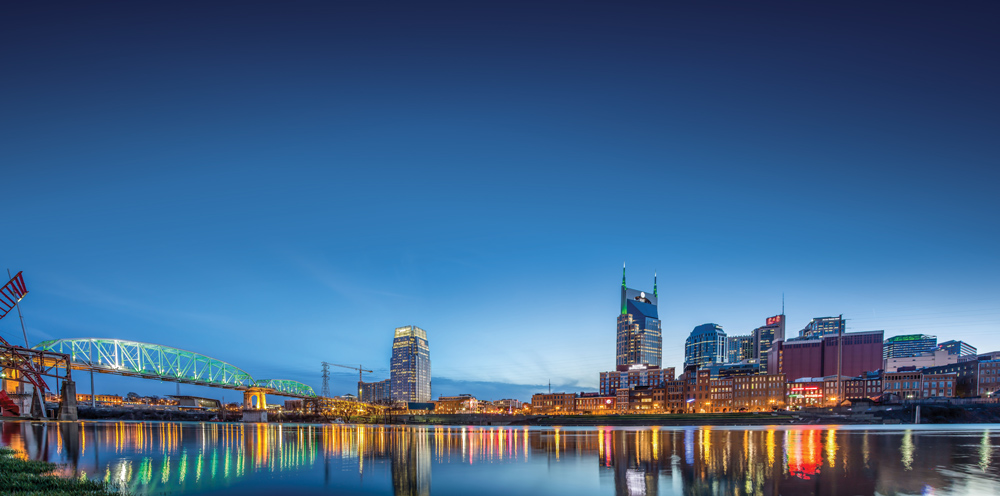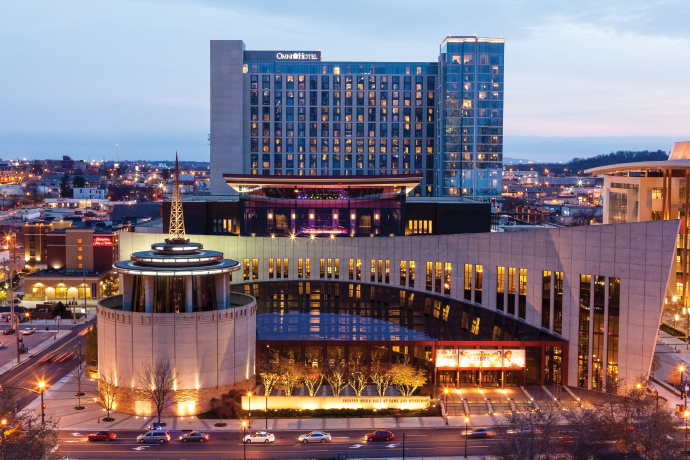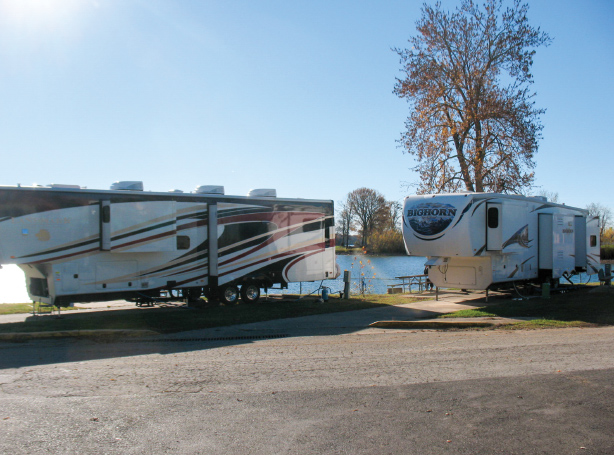On the Cumberland River in the rolling hills of central Tennessee, the Old South meets the present in a city with more to note than music
When visiting Nashville, Tennessee, world renowned as Music City, you may be tempted to ask a few residents what makes their town tick. That’s because music so predominates the culture here, it seems unlikely there’s much else. Even the 200-mile stretch of Interstate 40 that we followed to Nashville from Memphis is named the Music Highway, as designated by a 1997 act of the Tennessee legislature. Almost invariably, you’ll hear, as we did, that there’s more than music to this Southern city on the Cumberland River. Lots more.
History, Arts and Culture
For one thing, there’s the city’s history, which goes back more than two centuries to 1779, when pioneer James Robertson, one of the founding fathers of the state of Tennessee, led an overland party of settlers from Fort Patrick Henry in eastern Tennessee to establish an outpost, Fort Nashborough, at the town’s current site. Named for Revolutionary War hero General Francis Nash, it would, a decade or so later, be rechristened Nashville.
There’s also the presidential connection. The group of women and children who came by water to join the original bunch and reconnect some 60 families was led by pioneer John Donelson, father of Rachel, who would later become the wife of Andrew Jackson, the nation’s seventh president. The Jacksons’ home, the sumptuous Hermitage, lies a dozen miles outside of Nashville and is among a handful of 19th-century mansions in the area that can be toured.
The city is also devoted to fine arts and culture, apparent in the host of galleries and museums, dinner theaters and fine restaurants, a first-rate zoo and a botanical garden, earning Nashville the nickname Athens of the South. Appropriately, a full-scale replica of the Parthenon in Athens, Greece, was built here in 1897 during the state’s centennial celebration.
Music and Lights
It’s one thing to hear somebody say that Nashville is not only about the music, but it’s something else to believe it when you’re honky-tonking on garishly neon-lit Broadway, hitting one cavernous club after another. About 15 clubs stand side by side on this bustling thoroughfare, including Legends Corner, Tootsies Orchid Lounge and Robert’s Western World (a boot store by day and honky-tonk by night), to name a few. These clubs are where up-and-coming country stars and their bands rock the rafters from mid-morning till past midnight, hoping to gain the following that will make them famous.
Nashville may not be only about the music, but it’s clear that it’s the main thing when you drive along Music Row, with block upon block of tree-shaded lanes lined by fine old mansions that are now the offices of major country stars, Reba McEntire and Garth Brooks among them. Numerous music publishing companies and record labels are also headquartered here.
Of course, Nashville is mostly about the music, you think, as you wander through the glitzy galleries of the huge Country Music Hall of Fame and Museum. Or when you’re squeezing into a chair at the last empty table at the Bluebird Cafe, a 90-seat music club where country fans wedge themselves in like Vienna sausages to hear the newest tunes from singers hoping to make it onto the charts (Garth Brooks, Faith Hill and many others got their start here). Or when you’re caught up in hand-clapping and toe-tapping at historic Ryman Auditorium, a church built in 1892 and later the home for more than 30 years to the Grand Ole Opry, and still its winter quarters.
Or most of all, when you’re standing in the wings during a backstage tour at the Grand Ole Opry House on Opryland Drive (exit 12 off Briley Parkway), and country legend Whispering Bill Anderson is not 10 feet away, casually chatting with half a dozen other performers. The announcer calls out “Let ’er go, boys,” and the best-in-the-business house band, a white haze from cone-shaped lights filtering down on them, starts to play. Radio and television can’t do it justice. You have to be there.
Our days in Nashville were a crescendo leading to Saturday night at the Opry. Still, I would have to agree with those who say there’s more than music here. And who knew so much of it could be squeezed into a mere three-day visit, notwithstanding that each day began at 7 a.m. and ended
at midnight.
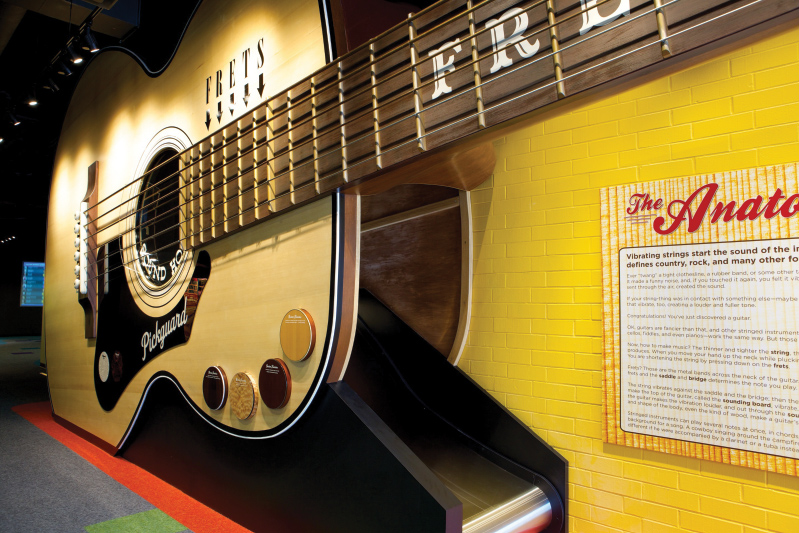
At the Country Music Hall of Fame, visitors can walk inside a 40-foot guitar built by C.F. Martin & Company.
Local Attractions
A main attraction in town is the Frist Center for the Visual Arts, with a “stripped” classical façade and echoing Art Deco interior, that was built in the early 1930s for Nashville’s main post office. It was bought and renovated by the city and the wealthy Frist family as a center “to celebrate and help visitors explore all forms of visual art,” said Martha Davis of the Nashville Convention and Visitors Corporation.
The Frist’s half-dozen galleries are host to traveling exhibits from major museums around the country and the world, Davis added. Educational programs for all ages are offered, plus there’s a café and a gift shop full of handcrafted art and jewelry, books, prints and more.
Anyone with a hankering to learn about country music, a lot or a little, will want to tour the Country Music Hall of Fame and Museum, which opened in 2001 and had its size more than doubled to 350,000 square feet last year. The futuristic-looking building symbolizes many things: from the air it looks like a bass clef, dark windows on the front resemble piano keys, and a ring of stones that decorates the rotunda is in the pattern of notes from the song “Will the Circle Be Unbroken?”
Self-guided tours wind past dozens of historic photos, placards that list country-music milestones and glass cases displaying musical instruments once played by country stars, along with the gaudy costumes they wore. Videos show entertainers discussing their craft and performing. There’s music trivia, recording and songwriting areas, and even a 40-foot guitar you can walk through.
Nearby in Centennial Park is another Nashville attraction, the august Parthenon, the only full-scale replica of the Greek version anywhere, said Director Wesley Paine. Originally built of brick, wood and plaster, it was intended to be torn down, but public outcry was such that it was rebuilt in the 1920s of reinforced concrete and concrete aggregate.
So massive is the building and the Athena Parthenos statue inside it that the 6-foot 4-inch Nike figure she holds in one hand seems minute. Twelve years after she was unveiled in 1990, Athena was gilded with 8 pounds of 23.75-carat gold at a cost of about $170,000, said Paine. The monumental goddess of wisdom absolutely glows. The building she occupies is also an art museum, displaying plaster replicas of the original Parthenon’s Elgin Marbles and about 40 paintings at any given time by 19th- and 20th-century American artists.
Historic Homes
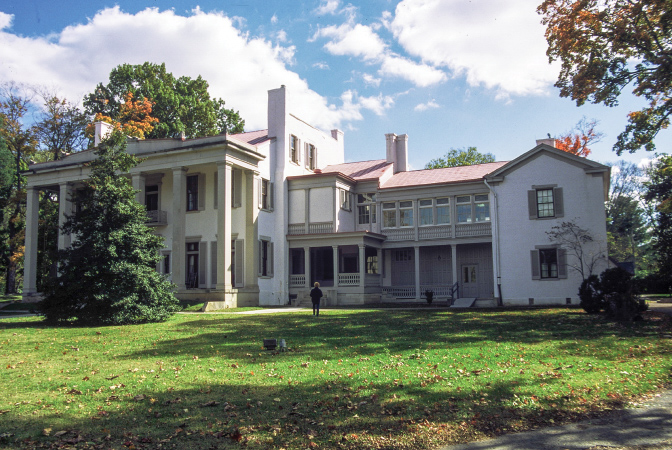
Belle Meade (“beautiful meadow”) was built by the slaves of William Giles Harding. Confederate General Harding is considered one of the founders of Tennessee horse racing and breeding.
Tours of Nashville’s mansions could easily fill several days. The elegant Greek Revival Hermitage was built in 1819, later enlarged, burned and rebuilt, we were told by one of the 30 or so interpreters who dress the part in clothing typical of the period. The Hermitage was opened to the public in 1889 and underwent a major restoration a century later. Today, among other things, original furnishings and wallpaper are on dis- play, as is a daguerreotype taken of Andrew Jackson in 1845 just nine days before he died. We see a tall, skeletal man who suffered from dysentery.
Belle Meade, another Greek Revival mansion, was built in the mid-19th century by General William Harding, although the plantation’s reputation as a stud farm had begun four decades earlier. It was home to Iroquois, the first American-bred horse to win the English Epsom Derby in 1881. After Iroquois died in 1899, still the most famous Thoroughbred of the time, his front hoofs were sent to Tiffany’s in New York and made into a pair of inkwells, on display in a glass case. A dozen or so historic buildings on the now-30-acre plantation can be toured.
Other mansions open for tours include the Italianate Belmont, once a summer home and now part of Belmont University, and Travellers Rest, Nashville’s oldest plantation house, built in 1799 by Judge John Overton, a tax collector, land speculator, banker and planter, as well as a judge, and also Andrew Jackson’s presidential adviser.
There’s also the 55-acre Cheekwood Botanical Garden and Museum of Art, with 11 gardens, a mile-long Sculpture Trail and the namesake Georgian-style mansion, built by the Cheek family of Maxwell House coffee in 1932 and now displaying a permanent art collection and traveling exhibitions.
Beyond Honky-Tonks
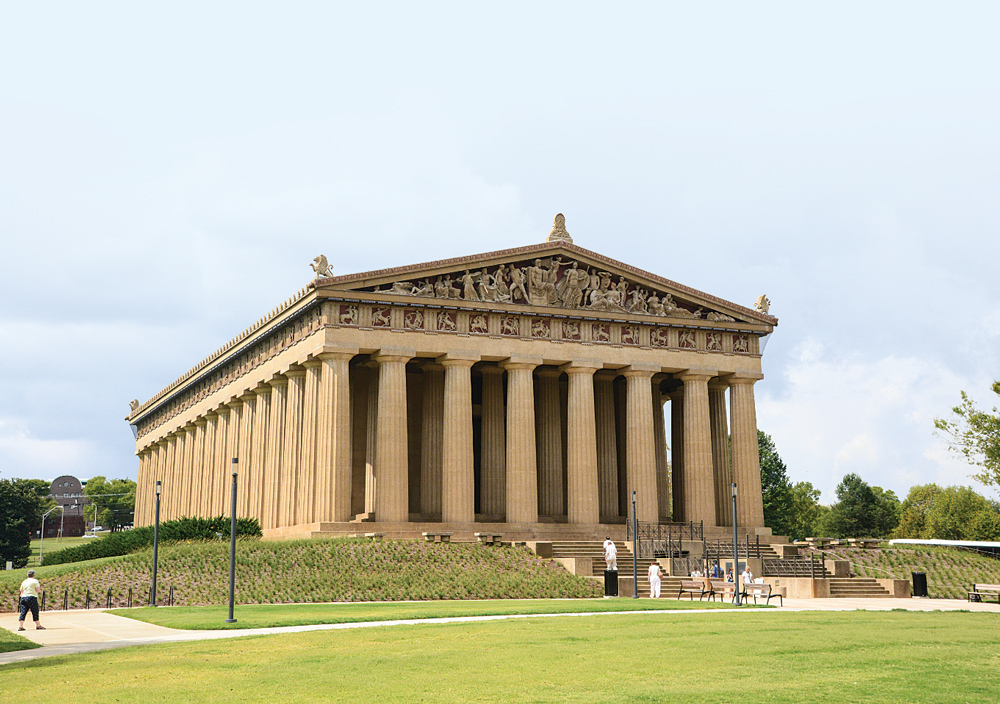
Called the Athens of the South because of its status as a capital city with many universities, Nashville built the world’s only full-scale copy of the Parthenon in 1897.
A visit to Nashville should also include a tour of the 1859 state capitol, which is today as it was more than a century and a half ago. From its lofty site, the Greek-style building has a wide view of 19-acre Bicentennial Capitol Mall State Park, where Tennessee history and natural wonders are interpreted. There’s a 200-foot granite map of the state, a 95-bell carillon and a 2,000-seat amphitheater, among other attractions.
Next to the park is the Nashville Farmers’ Market, where dozens of vendors sell every kind of fruit, vegetable and bedding plant you can think of. The market, open from dawn to dusk daily except Christmas and New Year’s Day, also includes restaurants and other shops.
Of course, there’s more: the Willie Nelson and Johnny Cash museums, Adventure Science Center, Fort Nashborough (a replica of the original settlement) and Fort Negley, which is now listed on the National Register of Historic Places. The partly restored fort was the largest and most important Union fortification built during the Civil War (mostly by African-American residents of the town) after Nashville fell in 1862.
Then there are the restaurants, way too many to provide a comprehensive list. But we can personally recommend Biscuit Love, which offers a variety of fares (I tried the unlikely combo of cold, “shaved” Brussels sprouts topped with two poached eggs); Arnold’s Country Kitchen, one of Nashville’s popular meat-and-three soul-food restaurants (the “three” refers to side dishes); and Hattie B’s, where the fried chicken is excellent, and you choose your degree of spiciness.
Nights in Nashville are, of course, for music, and there are so many venues that the possibilities seem endless. Our last night in town, I asked our local friend, who has been to the Opry many times, which performers would be on the program. She immediately rattled off more than half a dozen familiar names, among them some of my favorites: Keith Anderson, the Secret Sisters, the Whites, Jonathan Jackson, Mike Snider, the Annie Moses Band, Bill Anderson and Connie Smith, plus a few others. I laughed because I thought she was joking. She wasn’t.
I want to go back to the Bluebird Cafe, informal as a living room, where we heard a quartet of songwriters hunched over their guitars, playing terrific new tunes, and I want to spend a month of Saturday nights at the Grand Ole Opry.
Big Hits in Nashville
We recommend roaming the town on foot on a 90-minute Echoes of Nashville walking tour or on wheels via the Music City Hop sightseeing bus or trolley, which make 17 mostly music-related stops.
Echoes of Nashville Tours | 615-576-0804 | www.echoesofnashville.com
Gray Line Music City Hop | 800-251-1864 | www.graylinetn.com/music-city-hop
Nashville Convention and Visitors Corporation | 800-657-6910 | www.visitmusiccity.com
Stay and Play in Music City
We stayed at Nashville Shores Lakeside Resort, a 385-acre outdoor-recreation destination 10 miles from downtown on Percy Priest Lake. Open from March through November, the Good Sam Park combines an aerial-adventure course and a water park with cabins and campsites. The 84 RV sites include 30 on the waterfront and 74 with full hookups, plus free cable and Wi-Fi. Amenities range from a laundry room and camp store to a playground and dog park. Guests have private access to the lake and can take advantage of the marina, and pontoon boat and personal-watercraft rentals.
For year-round RV camping, a couple of Good Sam Parks offer campsites 365 days a year in Nashville and nearby Smyrna, a 30-minute drive from Music City.
NASHVILLE
Nashville Shores Lakeside Resort | 615-889-7050, extension 234 | www.nashvilleshores.com
Two Rivers Campground | 615-883-8559 | www.tworiverscampground.com
SMYRNA
Nashville I-24 Campground | 615-459-5818 | www.nashvillei24kampground.com

